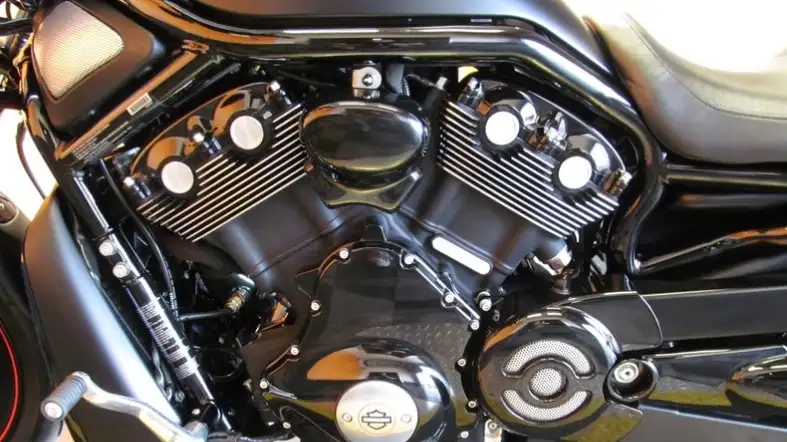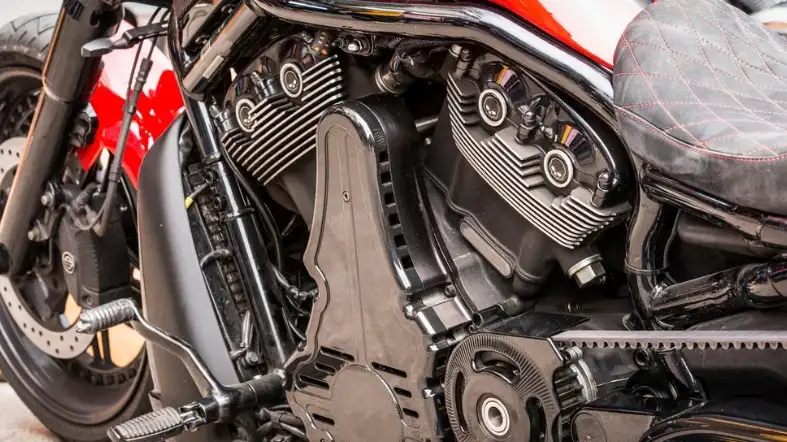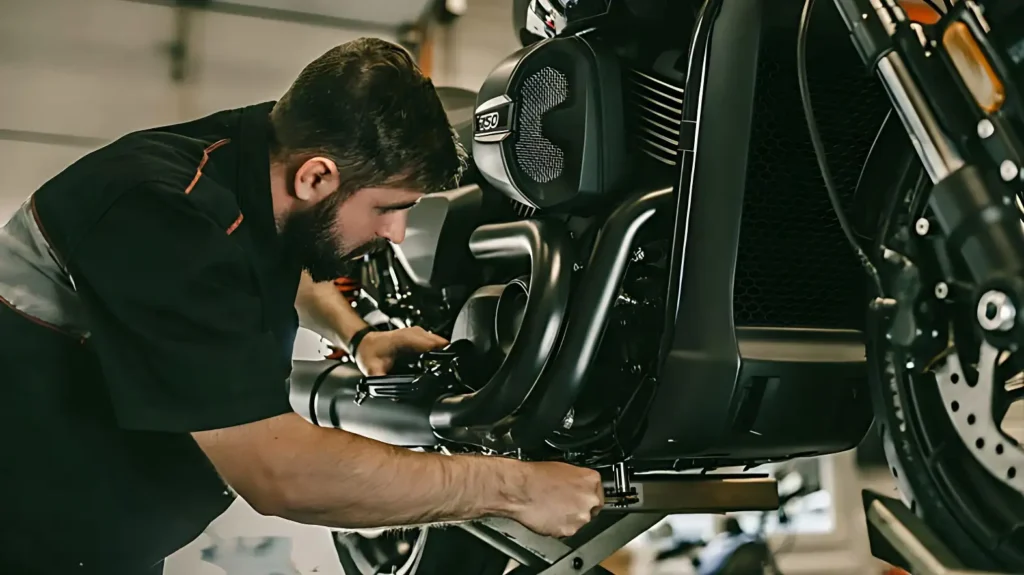If you’re looking to buy a used Harley-Davidson, then it’s important to understand the different model years and associated issues.
There are certain Twin Cam years to avoid, as they have known problems including cam chain tensioner issues, oil leaks, and overheating.
Before you decide to purchase a Harley Twin Cam engine, it’s important to research and understands the potential issues with specific model years.
In this blog post, we explore the reasons why some Twin Cam years may be problematic and provide some tips for identifying potential issues.

Harley Twin Cam Years To Avoid
We’ll take a look at some of the Harley model years to avoid and why.
The AMF Years (1969-1981)
From 1969 to 1981, Harley-Davidson was owned by AMF, and during that time, the company struggled with quality control issues.
The AMF years are often referred to as the “dark ages” for Harley, and many enthusiasts recommend avoiding models produced during this time.
These models had various problems, including poor build quality, electrical issues, and unreliable engines.
The Twin Cam 88 Engine (1999-2006)
The Twin Cam 88 engine was introduced in 1999, and while it was initially well-received, it soon became clear that it had significant issues.
The engine was prone to cam chain tensioner failure, which could cause catastrophic engine damage.
While this issue was addressed in later years, models produced between 1999 and 2006 are still considered risky.
The Harley-Davidson Street 500/750 (2015-2020)
Harley-Davidson introduced the Street 500 and 750 models in 2015 as a more affordable and accessible option for entry-level riders.
However, these models were plagued with problems, including a lack of power, poor build quality, and numerous recalls.
While some riders may still prefer these models, they are generally considered to be less reliable than other Harley models.
The Harley-Davidson V-Rod (2002-2017)
The V-Rod was a departure from Harley-Davidson’s traditional design, featuring a liquid-cooled engine and a more modern look.
While the V-Rod was initially well-received, it soon became apparent that the model had issues with overheating, poor fuel economy, and expensive repairs.

Why Some Years Of The Twin Cam Engine Are Problematic?
We will explore the reasons why some years of the Twin Cam engine are problematic.
The Cam Chain Tensioners
One of the most common issues with Twin Cam engines is related to the cam chain tensioners.
The cam chain tensioners were introduced in 1999 to replace the spring-loaded tensioners that were prone to failure.
However, the new tensioners were made of plastic, and over time, they can wear out and break.
When this happens, the cam chain can become loose, leading to catastrophic engine failure.
The Oil Pump
Another issue with the Twin Cam engine is related to the oil pump.
In some years, the oil pump was not designed to provide adequate oil flow, leading to premature engine failure.
The oil pump was redesigned in 2007 to address this issue, but riders with older models may still be at risk.
The Crankshaft Position Sensor
The crankshaft position sensor is a critical component of the engine management system.
In some years of the Twin Cam engine, sensor can become faulty, leading to misfires and poor engine performance.
This issue is more common in humid or wet conditions and can be difficult to diagnose.
The Cam Support Plate
The cam support plate is responsible for supporting the camshafts in the engine.
In some years of the Twin Cam engine, the cam support plate was made of aluminum, which can warp and cause oil leaks.
This issue was addressed in later models with a redesigned cam support plate made of stronger materials.
The Transmission
While not directly related to the engine, some years of the Twin Cam engine were paired with problematic transmissions.
The 6-speed transmission introduced in 2006 was prone to gear whine and premature failure.
This issue was addressed in later models with a redesigned transmission.
Maintenance Tips for Harley Twin Cam Owners

Regular Oil Changes
Regular oil changes are critical for the longevity of your Harley Twin Cam engine.
The recommended oil change interval is every 5,000 miles or every six months, whichever comes first.
You should always use high-quality oil that meets the specifications set by Harley-Davidson. Make sure to check your oil level regularly and top it up as needed.
Air Filter Maintenance
The air filter in your Harley Twin Cam engine is responsible for keeping dust and debris out of the engine.
It is essential to clean or replace the air filter regularly to ensure optimal engine performance.
The recommended air filter replacement interval is every 10,000 miles or once a year, whichever comes first.
You should also check your air filter every time you change your oil.
Spark Plug Replacement
Spark plugs are responsible for igniting the fuel in your Harley Twin Cam engine. They should be replaced every 20,000 miles or every two years, whichever comes first.
It is essential to use the correct spark plugs for your Harley Twin Cam engine, so always refer to the owner’s manual when purchasing replacement spark plugs.
Tire Maintenance
Proper tire maintenance is crucial for the safety and performance of your Harley-Davidson motorcycle.
Always check your tire pressure. You should also inspect your tires for any signs of wear or damage and replace them if necessary.
Battery Maintenance
The battery in your Harley-Davidson motorcycle is essential for starting the engine and powering the electrical components.
You should check your battery regularly and ensure that it is charged to the recommended level.
You should also inspect your battery for any signs of wear or damage and replace it if necessary.
FAQs
What Is The Harley Twin Cam Engine, And When Was It First Introduced?
The Harley Twin Cam engine is a V-twin engine produced by Harley-Davidson, and it was first introduced in 1999 as a replacement for the previous Evolution engine.
Are There Any Specific Years Of The Twin Cam Engine That Should Be Avoided?
Some riders have reported issues with certain model years of the Twin Cam engine, particularly the 1999 and 2000 models, which had a design flaw that could cause oil leaks and other problems.
However, many of these issues were addressed in subsequent model years, so it’s important to research each individual year before making a purchase.
What Kind Of Problems Can Arise With The Twin Cam Engine?
Some common issues reported by Twin Cam owners include oil leaks, transmission problems, and issues with the cam chain tensioners.
However, many of these issues can be mitigated with regular maintenance and careful riding.
What Should I Look For When Buying A Used Harley With A Twin Cam Engine?
When buying a used Harley with a Twin Cam engine, it’s important to inspect the bike thoroughly and look for signs of wear and tear.
Check for oil leaks, inspect the cam chain tensioners, and pay attention to any strange noises or vibrations coming from the engine.
Are There Any Aftermarket Upgrades Or Modifications That Can Improve The Performance Of The Twin Cam Engine?
Yes, there are many aftermarket upgrades and modifications available for the Twin Cam engine, including high-performance air filters, exhaust systems, and engine tuners.
However, it’s important to choose reputable brands and work with a qualified mechanic to ensure that these upgrades are installed correctly and don’t cause any problems.
What Is The Typical Lifespan Of A Twin Cam Engine?
The lifespan of a Twin Cam engine can vary depending on a variety of factors, including how well it’s maintained, how often it’s ridden, and how aggressively it’s ridden.
With proper maintenance and care, however, many Twin Cam engines have been known to last for over 100,000 miles.
Is It Possible To Retrofit A Twin Cam Engine Onto An Older Harley-Davidson Model?
Yes, it is possible to retrofit a Twin Cam engine onto an older Harley-Davidson model, but it can be a complicated and expensive process.
It’s important to work with a qualified mechanic and ensure that all necessary parts and modifications are installed correctly to avoid any safety issues or damage to the bike.
Conclusion
The Twin Cam engine was introduced in 1999 and continued to be used until 2017.
However, there were some known issues with certain model years, including problems with the cam chain tensioner, which could lead to catastrophic engine failure.
If you’re considering buying a used Harley with a Twin Cam engine, it’s best to avoid the 1999-2006 model years.
These bikes are known to have issues with the cam chain tensioner, which can be costly to repair.
Instead, consider a newer model year, such as the 2007-2017 bikes, which have updated parts and are less prone to these problems.
By doing your research and being aware of the Twin Cam years to avoid, you can make an informed decision and enjoy your Harley for years to come.
